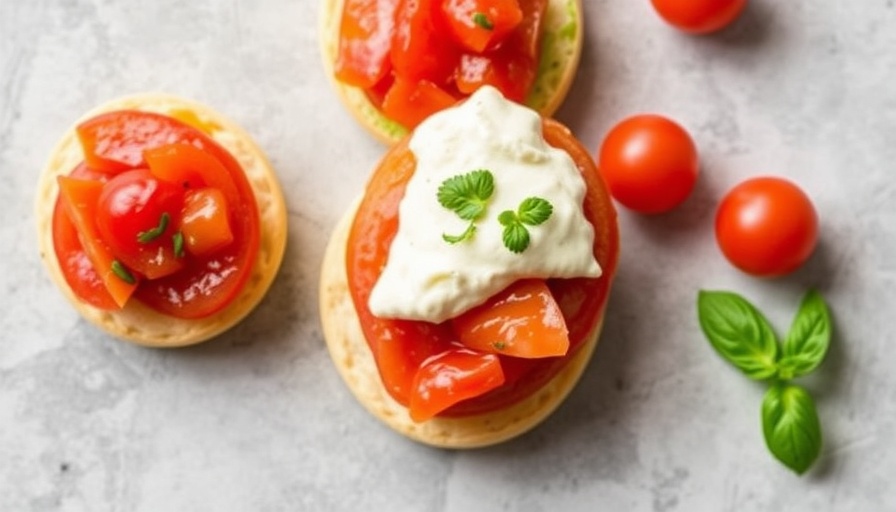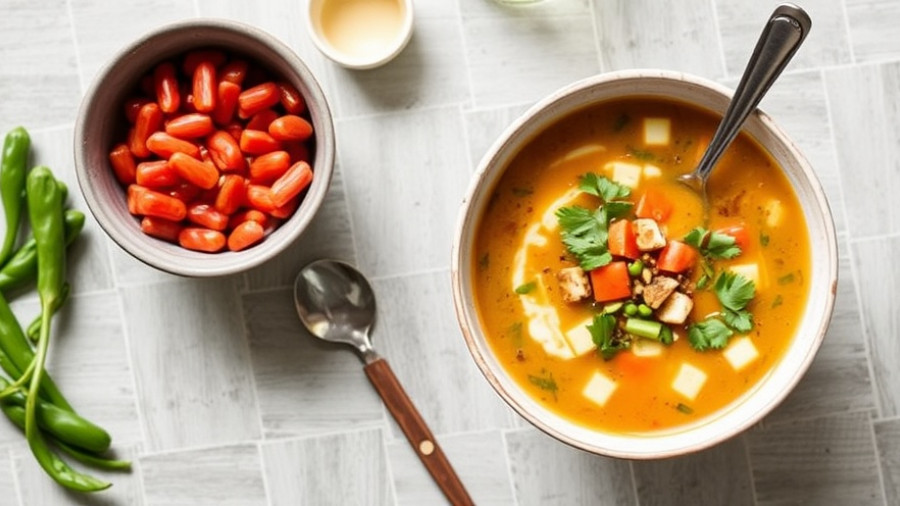
Discover New Tomato Flight Toppings That Delight
Tomato flights have emerged as a playful and delicious way to explore new flavors while promoting healthy eating. Perfect for families, senior gatherings, or even casual dinners, these colorful combinations can be a fun centerpiece that engages everyone around the table. But what exactly goes into a great tomato flight? Here are some dietitian-approved toppings that will make your tomato tasting both nutritious and enjoyable.
Why a Tomato Flight?
Tomatoes are rich in vitamins and antioxidants, making them a smart choice for a nutritious snack or appetizer. Not only are they low in calories, but their versatility means they can accommodate a variety of flavors and diets, appealing to children and seniors alike.
Top Topping Ideas
When putting together your tomato flight, consider incorporating a mix of flavors. Here are some exciting toppings:
- Classic Basil Pesto: Fresh and vibrant, basil pesto adds a bold punch to tomatoes, enhancing their inherent sweetness.
- Feta Cheese and Olives: For a Mediterranean twist, sprinkle crumbled feta cheese and sliced olives on your tomato slices.
- Balsamic Glaze: A drizzle of balsamic glaze imparts a tangy sweetness that pairs beautifully with the acidity of tomatoes.
- Roasted Garlic Hummus: For a creamy and protein-rich topping, consider using roasted garlic hummus. It adds a delicious depth of flavor.
- Herbed Cream Cheese: Combining cream cheese with fresh herbs can create a delightful spread that complements the freshness of tomatoes.
Easy Preparation Tips
Preparing a tomato flight is simple and doesn't require extensive cooking. Encourage family members to join in, allowing children to help with the toppings, which can turn dinner into a fun family activity. Slice a variety of tomatoes—consider heirloom, cherry, or Roma for a colorful display—and let everyone build their own combinations.
Making It Special
Don’t forget to pair your tomato flight with a refreshing drink. Options like sparkling water infused with fruits or herbal teas can enhance the experience, making it an occasion rather than just a meal.
Final Thoughts
Tomato flights are not merely about enjoying fresh ingredients; they emphasize the importance of family meals and healthy eating habits. By introducing fun and flavor, you can make dining both exciting and enriching for all age groups.
 Add Row
Add Row  Add
Add 




Write A Comment